Gardens by the Bay murder: How police used DNA to prove their case
The Singapore Police Force says collecting DNA from people arrested for more crimes will beef up its investigative capabilities and solve major crimes quicker.
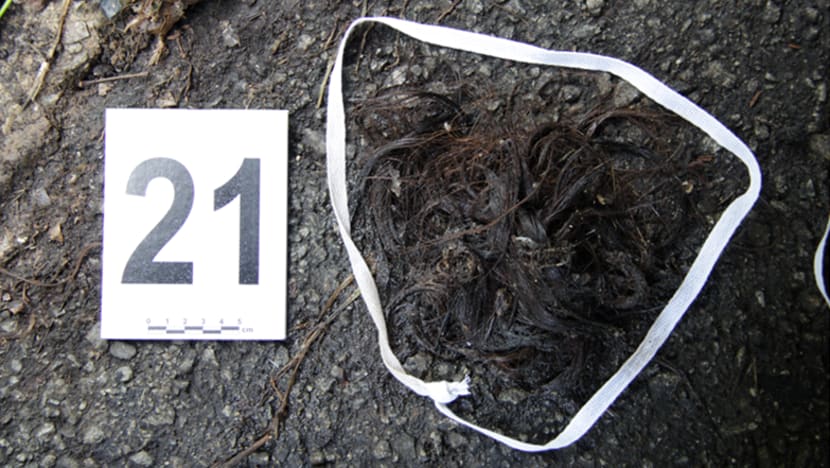
Police found hair thought to be from murder victim Ms Cui Yajie at a Lim Chu Kang road where her body was burnt. (Photo: SPF)
SINGAPORE: In the middle of July 2016, Leslie Khoo found himself in hot water.
Chinese national Cui Yajie, 31, had been reported missing, and police investigators found out that Khoo, then 48, was the last person to see her. They suspected Khoo knew more than he was telling.
When officers arrested Khoo on Jul 20 and questioned him, he insisted he had dropped Ms Cui off at Upper Jurong Road. Investigators went to that exact spot but could not find any trace of him ever being there. This was a red flag, so they interrogated him further.
"He was just like a deer caught in the headlights," Superintendent of Police (SUPT) Alvin Phua, who assisted the investigating officer in Khoo's case, told CNA. "He knew the game was up."
Khoo eventually revealed that on Jul 12, he had argued with Ms Cui in his car and drove her to a road along Gardens by the Bay, where "in a fit of anger" he strangled her to death.
The "natural question", SUPT Phua said, would then be where the body was. Khoo claimed to have brought it to a remote area in Lim Chu Kang, where he burnt it over three days under a discarded lorry canopy.
Khoo then led investigators to the scene, prosecutors said, telling them with a smile that there was "nothing left".
Following an 11-day trial in 2019, Khoo was convicted of murdering Ms Cui and sentenced to life imprisonment. While Khoo's confession might have made it look like an open-and-shut case, SUPT Phua said this was only "the first part of the story".
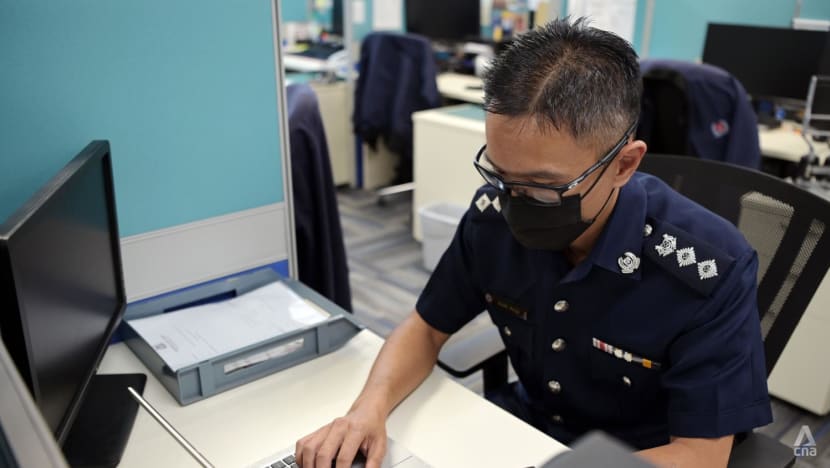
"You need to find out whether that is a genuine confession or a confession that is aimed to shield others from the punishment of that crime," said SUPT Phua.
The 47-year-old is also deputy head of the Special Investigation Section, a unit under the Criminal Investigation Department that deals with serious crimes like murder, kidnapping and those involving firearms.
"So, you need to look out for a lot of corroborative evidence to either prove or disprove his version of the event," he added.
The evidence includes eyewitnesses or closed-circuit television (CCTV) footage, but if they are not readily available - like in Khoo's case where the crimes happened in remote areas - then a DNA profile becomes crucial.
"Because you have been there, not only I should be able to see you on CCTV," SUPT Phua said. "Any contact that you have, your DNA transfer might be there. More often than not, it is there. And this is where the recovery and eventual tracing of DNA evidence become absolutely critical."
COLLECTING DNA FROM MORE PEOPLE
This emphasis on DNA comes after a Bill was introduced in Parliament on Aug 1, proposing to allow the police to collect DNA samples from people arrested for more crimes.
Under the Registration of Criminals Act, police currently can collect DNA samples only for a specific list of registrable crimes, including shop theft, molestation and cheating. The Bill seeks to expand this scope by adding "eligible" crimes like voluntarily causing hurt, drink driving and reproducing obscene films.
"Restricting the collection of an individual’s particulars and DNA information to just these types of (registrable) crime has resulted in smaller databases, which may limit the police’s ability to solve crimes, especially in cases with very few leads," the Ministry of Home Affairs had said.
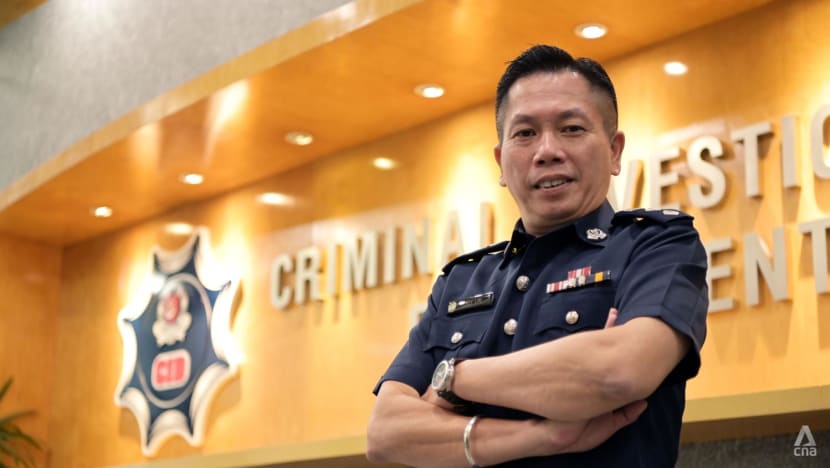
Special Investigation Section head SUPT Roy Lim, 50, said the expansion will help deter more would-be criminals, adding that the DNA database, launched in 2003, has helped the police solve major crimes quicker.
This database contains DNA profiles of every individual who has gone through the police system for registrable crimes, SUPT Lim said. This DNA could be extracted from blood or buccal samples.
It also stores DNA evidence found at crime scenes, helping police solve cold cases when a matching profile enters the system down the road.
"If we increase the database, we increase the probability of people that we want to reach out to, especially perpetrators. We also lower the time needed to hunt for these people," he said.
"For major crimes, when we don't have a suspect, a lot of manpower and resources are dedicated to trying to solve these cases as quickly as possible. When you solve crimes quicker, people feel safe."
MOLOTOV COCKTAILS
For instance, SUPT Lim oversaw a 2016 investigation into a case of mischief by fire, when police were on the hunt for a group of men who hurled Molotov cocktails at St James Power Station.
Officers had CCTV footage of the group's silhouettes and their getaway car, but the images were not definitive enough to identify crucial markers, like their faces or the car's licence plate.
The big break came when officers found a lighter along the group's suspected escape route near the nightclub, SUPT Lim said.
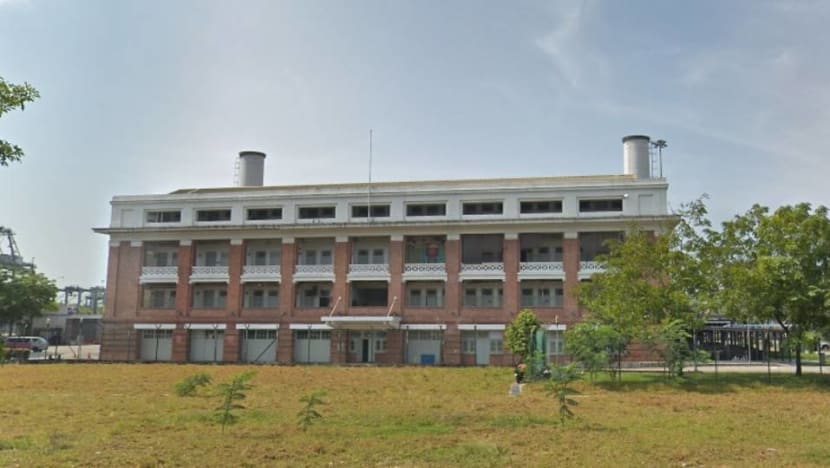
Eager not to miss anything, officers bagged the lighter and sent it for DNA analysis. This returned a match in the database to someone who was previously convicted of a registrable crime. Police interviewed the man and used circumstantial evidence to prove he was at the scene that day.
The man eventually broke down, and his statements revealed the identities of four other suspects.
"If we didn't find that lighter, it would have taken us probably a longer time, searching stretches of roads and camera after camera to try to find the car plate," SUPT Lim said.
"So, the lighter was a very fast forward way to help us to solve the case. We could have solved it probably in another two or three days' time after we have covered all the CCTVs, but this was almost immediate - the next day."
THINKING OUT OF THE BOX
Khoo's murder case was different in that police already had pieces of the puzzle, but needed DNA to ensure the pieces fit.
After Khoo's confession, investigators seized his car and sent it to the Health Sciences Authority (HSA) for processing. HSA found bloodstains in the car, possibly from Ms Cui's decomposing body that was left in the car overnight.

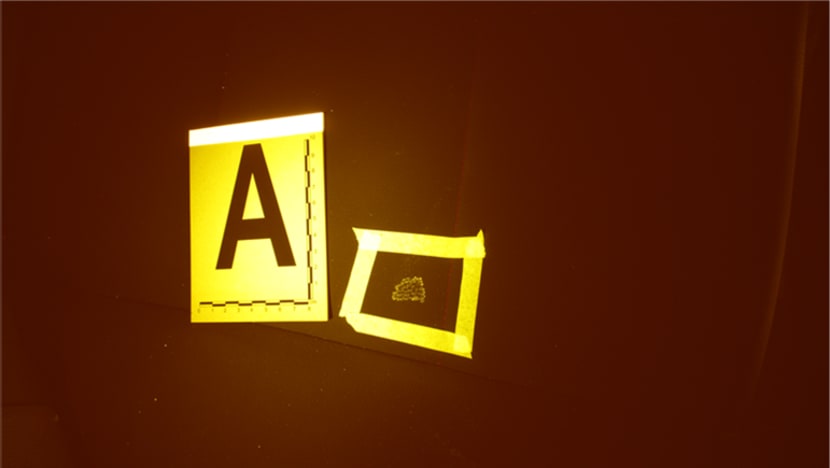
But because there was no more body, police needed to find another way of getting Ms Cui's DNA so they could try matching it with the profile from the bloodstains. Investigators went to her home and collected a pair of pants she wore as pyjamas.
"The logical place to look at will definitely be things that a person uses on a daily basis intimately," SUPT Phua said.
"So, we can be looking at pyjamas, like in this case, clothing worn that wasn't washed, and toothbrushes or shavers for guys. These are the things that you use on a daily basis and the chance of getting a DNA profile there is high."
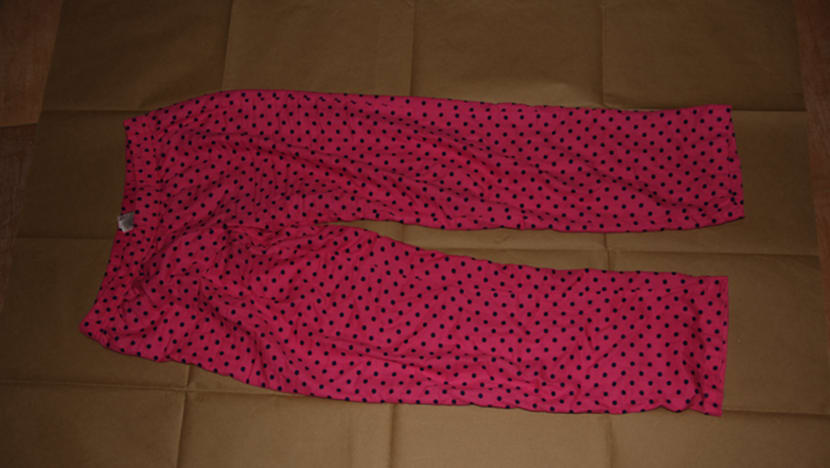
But for the analysis to be accurate, SUPT Phua said it was important to ensure that this item was only used by the subject and not anybody else.
"This requires a bit of thinking out of the box," he said.
"It's not only you just get any pair of pyjamas, so long as it's in her room. You need to be sure that these are worn by her and her only. And so these are the additional things that you need to verify along the way."
DNA from the bloodstains and Ms Cui's pyjamas were eventually shown to be a match.
NEEDLE IN A HAYSTACK
Back in the wooded area at Lim Chu Kang Lane 8, where Khoo said he had burnt the body, officers started combing for evidence. Dusk had fallen and it was hard to see anything, much less traces of human remains. Police could set up large lights, but this would cast long shadows too.
The search continued the next day in the morning light. Crime scene specialist Jolene See, 30, had just started her 8am shift and was sent to the scene under the harsh sun.
As per common practice, the crime scene specialists spoke to investigators to get the facts of the case. They were told that there was no body, so they needed to find anything - possibly something small - that resembled human belongings or remains. This could be hair, fabric or any source of DNA.
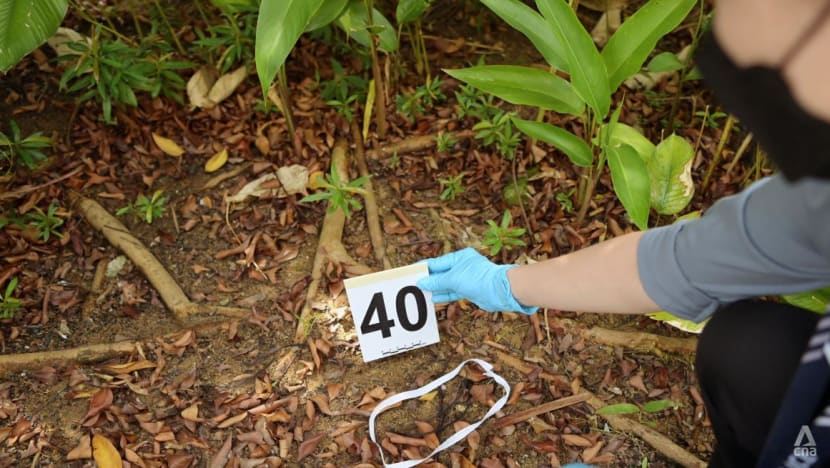
Ms See slipped on her surgical gloves and shoe covers and got to work.
The officers walked shoulder to shoulder in a thorough line search to scour the narrow lane, as well as the vegetation and drain to one side. Khoo said he had disposed in that drain whatever remains were left.
The officers were used to searching for evidence in urban settings, but this was different. When someone saw something, they stopped, squatted and sometimes brushed aside leaves to take a closer look.
"It’s quite difficult because it’s outdoor terrain, so it's very hard to look for minute things, and we have to be really detailed about it," Ms See recalled. "We do a lot of bending and squats. It can be exhausting."
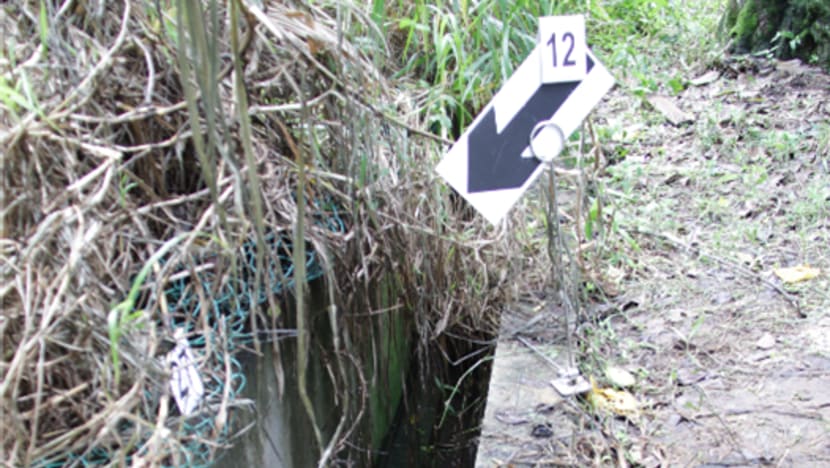
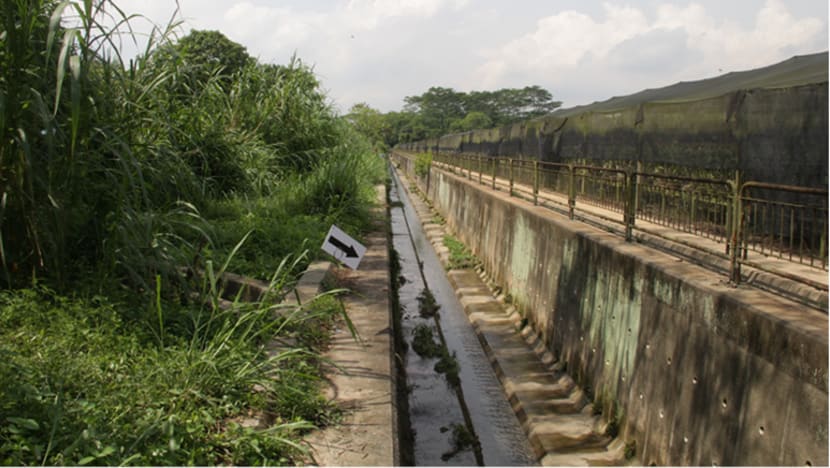
To ensure the search was as thorough as possible, the gurkhas, National Parks Board and national water agency PUB were brought in for their expertise in forested areas and how water flowed in that specific drain, SUPT Phua said.
"You will want to leverage the expertise of different agencies to see how best you can carefully and meticulously process the entire area - go through it with a fine comb for any shred of evidence, because you can't afford to miss out anything," he said.
After a few hours of searching, officers found clumps of what looked like human hair - the same colour as the asphalt it was on - under one of two discarded lorry canopies in the area. CNA was given access to never-before-released crime scene photographs.
"We collected it, packed it properly to preserve the DNA, and handed it over to the investigating officer to send it for analysis," Ms See said.
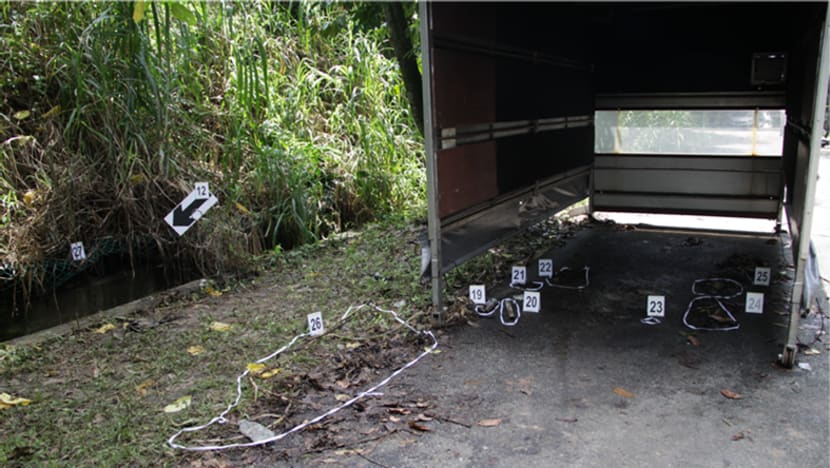
Officers continued searching over seven days and eventually found more than they hoped for, including bone fragments that later turned out to be animal bones.
While HSA could not match the hair to Ms Cui as it was missing its roots, a mitochondrial DNA analysis concluded that it matched the profile of her mother. This was submitted as evidence in court to show that Ms Cui's body was indeed burnt there.
It was also the first time that mitochondrial DNA sequencing was used in Singapore to establish a deceased's identity without a body.

"It was nice to recover something that will help us to identify or at least try to identify the body," Ms See said of the hair discovery. "I think at that point of time, we were glad that our hard work actually paid off."
SUPT Phua said DNA from the bloodstains in the car and the hair at Lim Chu Kang helped solidify the case.
"You're not talking about any single silver bullet to the case, but you can say it’s the confluence of all the evidence, little bits, that help to add up and strengthen the case to suggest that it was her present at the scene," he said.
HOW DNA IS COLLECTED
This is why it is so important to ensure that DNA evidence is not contaminated, SUPT Lim said, adding that officers who first respond to a crime scene are trained to process it properly. Gloves and shoe covers are also discarded after a single use.
"It starts from how the evidence was found, then how it's documented and photographed, packaged and submitted," he said.
"HSA has a different set of protocols on how are they going to deal with it and extract DNA. Ours is to ensure that what we seize is not contaminated and is original - we don't introduce anything else - before it goes to court."
Officers are also taught where to look for DNA based on the circumstances of the case, although SUPT Lim acknowledged that mastering this takes years of experience.
"That's why we are always teaching and teaching. You don't teach, five years down the road everybody will say, 'Never mind, just wait. No DNA, don't solve.' It cannot happen," he said.
"The old detective way must complement the new-age technology that we have."
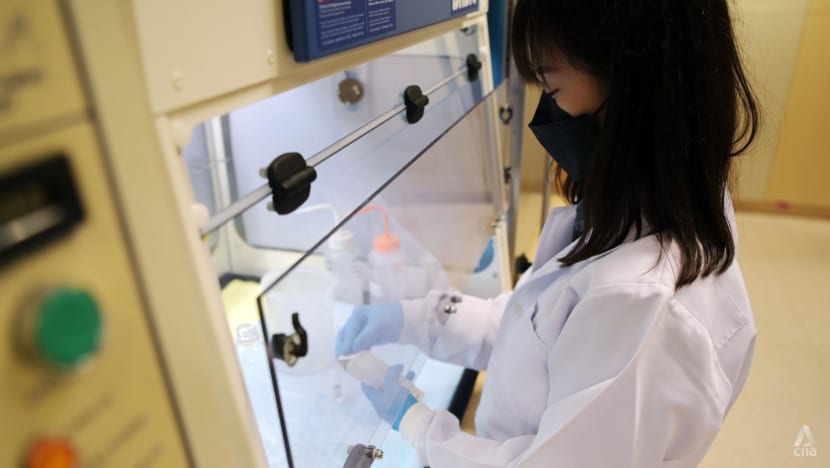
DNA sources include blood, hair, semen, saliva and skin cells, but not all of them are visible to the naked eye. Crime scene specialists use a specific light source to unveil human secretions, and a screening kit to determine whether a substance is really blood, Ms See said.
As for collection, an item small enough will be seized in whole and sent to HSA for analysis. If an item cannot be removed, like a window pane, it will be swabbed in all "probable areas of DNA deposition" before the swabs are sent to HSA, Ms See added.
SUPT Lim is confident that perpetrators, despite their best efforts otherwise, will leave traces of DNA at the crime scene.
"You want, you dress yourself up like a ninja - housebreakers have done that, socks, gloves and all - but you will still leave something behind," he insisted.
"DNA is a silent witness ... They're just waiting and thinking, 'Come swab here bro, this fella switched on the tap.'"
Another quality of DNA is that it is known to "reside around for the longest time", SUPT Lim said, pointing to how police officers planted their own DNA on 5kg of explosives before blowing them up to study the resilience of DNA evidence.
"We tested where we planted the explosives, and we still got DNA," he said. "It actually depends on contamination, including the rain and sun, but DNA stays for a long, long time."
DNA DATABASE
DNA collected from crime scenes or blood samples of those brought in for registrable crimes are then stored in the DNA database, which SUPT Lim said is located in a "very secured" server accessible only by a limited number of people with security clearance.
"Even I don't have access to the DNA database," he said.
"Even if we want to do any matching, we go through an authorised person. There are also (data protection) protocols and security. We don't want somebody to be planting it, we don't want people to be taking it out."
SUPT Lim suggested that a national DNA database could be even more useful for solving and deterring crime.
For example, he recalled how police were trying to use DNA to identify the perpetrators in the Little India riot, but were unable to as many of them were foreign workers whose DNA were not in the database.
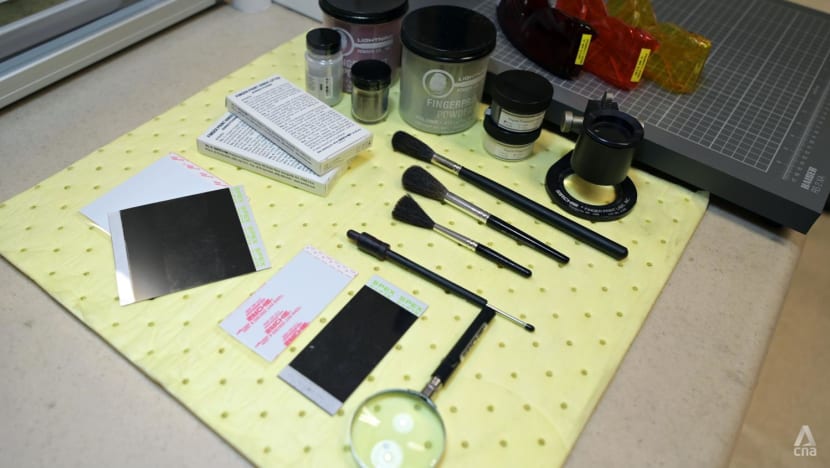
But when asked about how such a national database could raise privacy concerns, SUPT Lim said these were rights issues drawn from Western influence.
"But to me, if you don’t commit a crime, why are you afraid? People say this could be manipulated, but we have so much (security measures) in place," he said.
"People always protect themselves, but if it is they themselves who suffer the loss of loved ones, then they start questioning the police: 'How come you don’t have DNA? Technology is so advanced.' The fact is you could be one of those that are opposing us in getting DNA."
DISMEMBERED BODIES
SUPT Lim recounted how in 2013, police used DNA to identify a headless body found in a Whampoa canal near McNair Road. It belonged to Indian national Jasvinder Kaur, 33, who was murdered by her husband.
"No head, no hands so we couldn't tell (her identity). We found something else that belongs to her, and we matched it with the body," said SUPT Lim, who was personally involved in the investigation.
"You can extract DNA from the bone marrow, but of course, how good the DNA is going to be, how usable it is and how much it is depends on the condition of the body."
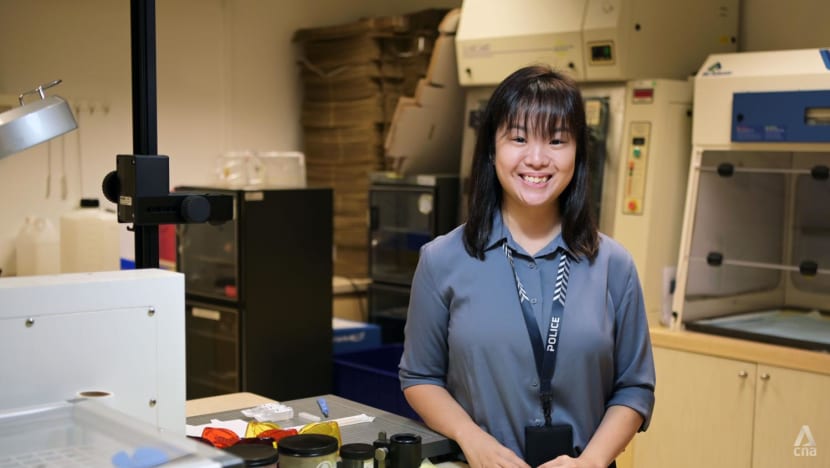
Dismembered and decomposed bodies are all part of the job for Ms See, who said she is not disgusted but sad when dealing with such scenes.
"I will want to try my best to actually recover as much DNA and fingerprints or any evidence that will help in the case and when it goes to trial," she said, adding that she has dug through rubbish chutes to find evidence.
"Sometimes we miss our meals and we're just exhausted, then we're just asking ourselves why we're here. But I think ultimately we are doing something good. And there's a sense of satisfaction at the end of the day."
















